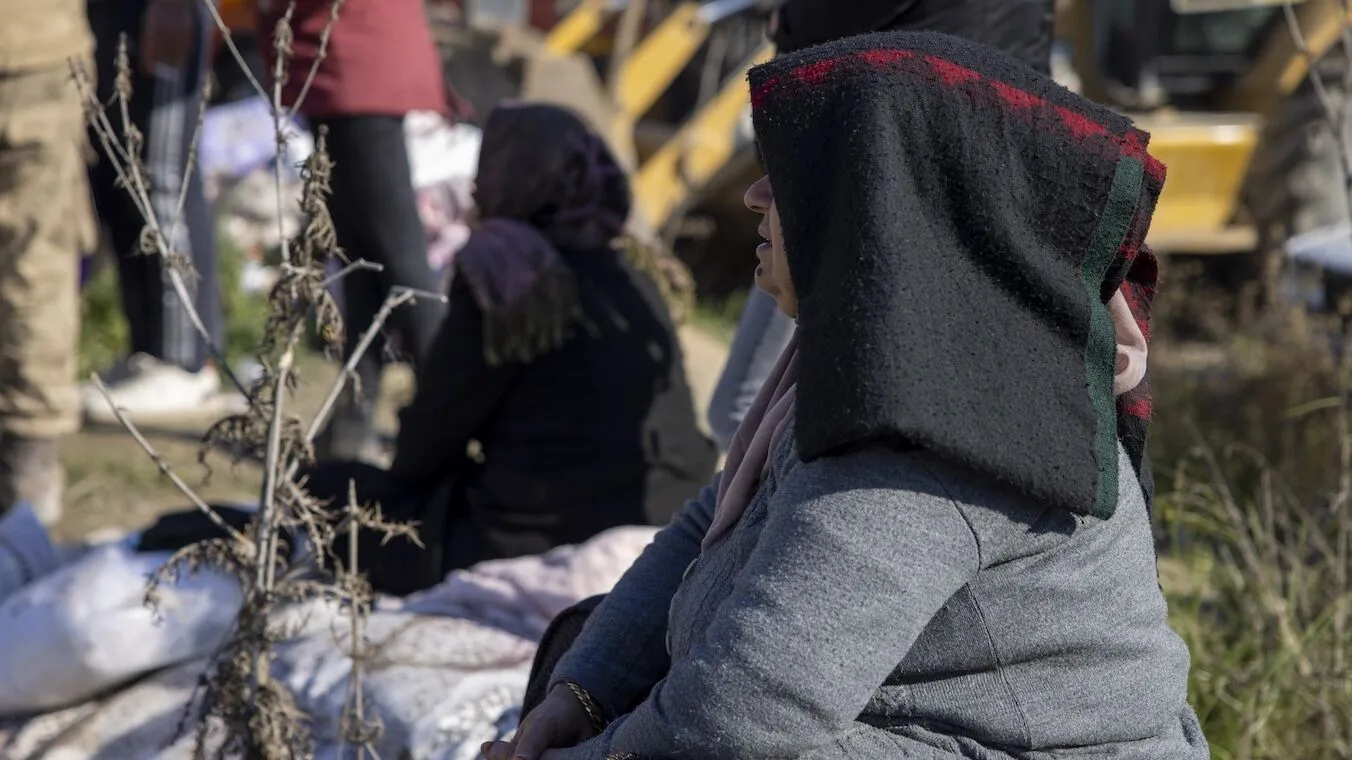On the Ground: The Earthquake Damage You Don’t See
Read a dispatch from a Project HOPE team member deployed to our emergency response in Gaziantep, Türkiye.

The moment I landed in Istanbul, I could feel the devastation. It wasn’t so much the physical destruction, as this area didn’t get much damage from the earthquake, but it was the mental aspect of it all. As I met with the rest of the Project HOPE team in the airport, we waited for a flight that would take us to Adana, Türkiye. At the time, this was the only city that had a functioning airport that could get us as close as possible to the areas with the greatest damage. Freezing temperatures, snow, and a high demand to get into Adana meant delayed flights.
During the delay, we had the opportunity to talk to many Turkish people who were trying to get to Adana as well. It became apparent that many hadn’t heard from their loved ones for three days and were going to try to get to them in any way possible. It seemed like there wasn’t a single Turkish person in that airport that hadn’t been affected by the earthquake. Each person seemed to have had a family member, friend, or colleague they were desperately trying to hear from.
Irmak, a 60-year-old woman, was one of the first to approach us. She thanked us for being part of the emergency response and shared with us that her mother’s apartment building had collapsed. On her phone she showed us news footage of search and rescue dogs walking through rubble where her mother’s apartment once stood. “My mother lives in Antakya in the south of Türkiye. Her house is not there anymore. Everything is destroyed,” she said. “I hope that she is alive, but I’m going there so I can hold my mother’s hand, dead or alive.”

As I heard Irmak speak about her mother, I was instantly moved. She seemed so strong and maintained a calmness, as her flight got delayed at a moment when time was everything. “I’m surprised at myself at how I am dealing with this right now,” she said. “Perhaps it has not hit me yet.”
A young girl who couldn’t be more than 18 approached me and began showing me pictures of her father in an emergency room. We communicated through a translating application. Her father had been under rubble for two days before a search and rescue team found him. From the pictures she showed me, he seemed to be recovering well and in good spirits. Then she showed me pictures of her brother and baby niece. It was day three, and she had not heard from them. She told me, “I need to go see them in Antakya, and find out how my family is.”
Throughout the airport, this seemed to be a reoccurring somber theme. People working in the airport restaurants and shops would share pictures and videos of places where relatives lived that had now become scenes of debris. There was a strength they seemed to embody while telling these stories. I was heartbroken at hearing about their loss, the desperation, and hopelessness some expressed. They seemed to be enduring the worst thing that could happen with such fortitude.
There was a strength they seemed to embody while telling these stories. I was heartbroken at hearing about their loss, the desperation, and hopelessness some expressed. They seemed to be enduring the worst thing that could happen with such fortitude.
Once we arrived in Adana, we drove to Antakya, one of the cities that was most impacted by the earthquake. What should have been a three-hour drive became six hours, as the only viable road into the city was jam-packed. First responders, ambulances, military, and emergency vehicles maneuvered to try to get into the city’s entrance. The rest of the traffic was from families. I visualized the same people I spoke with at the airport trying their hardest to get into the city. As I glanced through the vehicles, I would see people who seemed desperate to get in. Many got out of their cars and were trying to run and find a way into the city, in what was miles of traffic.
Eventually, we were able to find a way past the traffic. Once in Antakya, our K-9 search and rescue team worked diligently for hours and what would become many days. The devastation in the city was unimaginable. There was dust all over; décor and signage of buildings that once stood high were now on the ground. Clothing, furniture, beds, and items that once were inside apartments were now scattered throughout the streets. Buildings had either been turned to rubble or seemed to be on the brink of collapsing.
Among every mountain of rubble, where search and rescue teams did their work, I saw many cars. Full communities of people who were now living in their cars would park near the rubble where they knew their relatives were. They would stay outside waiting and hoping to get some news. All of this was taking place under freezing temperatures. As I walked past the cars, they would all have blankets, jackets, and many times even children huddled inside.

Tents where people were now living were scattered throughout the city. Families would be huddled outside around fires they would make to stay warm. I was heartbroken at the sight of children who just a few days ago were probably playing at home, and whose entire lives were changed as they sought out warmth. Our team visited shelters, where families were eager to receive distributions of blankets and sleeping bags.
As I accompanied one of our partners on the ground, suddenly we heard loud screams and shouts. We ran to an area near the rubble, where an older woman was crying and screaming from the top of her lungs. Search and rescue teams had pulled her daughter from the rubble, but unfortunately, she had not made it out alive. The pain her mother expressed is something I will never forget. Our partners ran to console her and encouraged her to continue to let her emotions out.
I was heartbroken at the sight of children who just a few days ago were probably playing at home, and whose entire lives were changed as they sought out warmth.
While our team continued to support and respond to the situation at hand, it became evident to me that many of the victims of this disaster were Syrian refugees. They could also be seen waiting in different areas, displaced and speaking amongst each other in Arabic. I couldn’t fathom the mental toll that it took to seek refuge in a new country and confront the current situation at hand.
That night, we drove to Gaziantep, where the rest of our team was based. Throughout the three-hour drive, you could see more people who were forced outside under freezing temperatures. Gaziantep itself seemed deserted—people had left their homes, restaurants, offices, and businesses in fear that the buildings would collapse.
In Gaziantep, I chatted with one of our partners based in Türkiye and shared with him the heartbreak and empathy I felt for the people I had seen and met. He mentioned to me that there was no other option but to rebuild. Turkish people, he said, were resilient and knew how to get up from disasters.
Many thoughts came through my head at this point and throughout my time in Türkiye. The rebuilding process had just begun, and this meant much more than just the infrastructure. Mental health trauma with a disaster of this magnitude was evident all around. Families have been displaced from their homes and have lost everything and some will have to come to terms with losing loved ones. There is and will continue to be a massive need for mental health services for the millions of people throughout the country who have been affected by this earthquake.
Armand Viscarri is a Media Relations Manager for Project HOPE.








